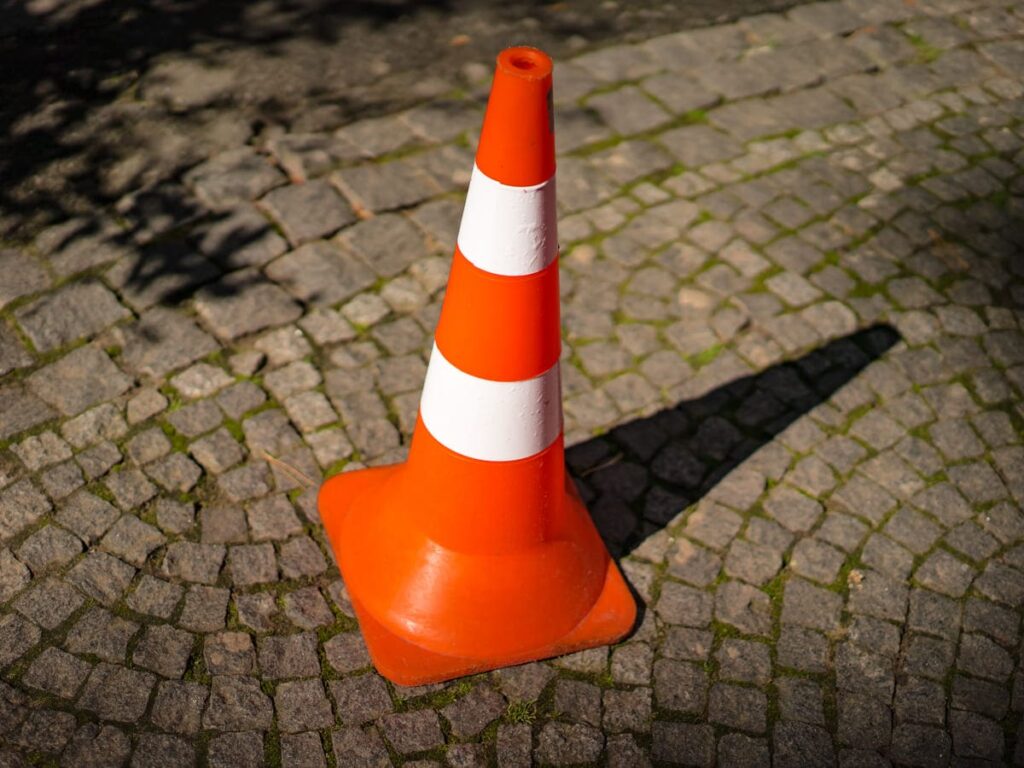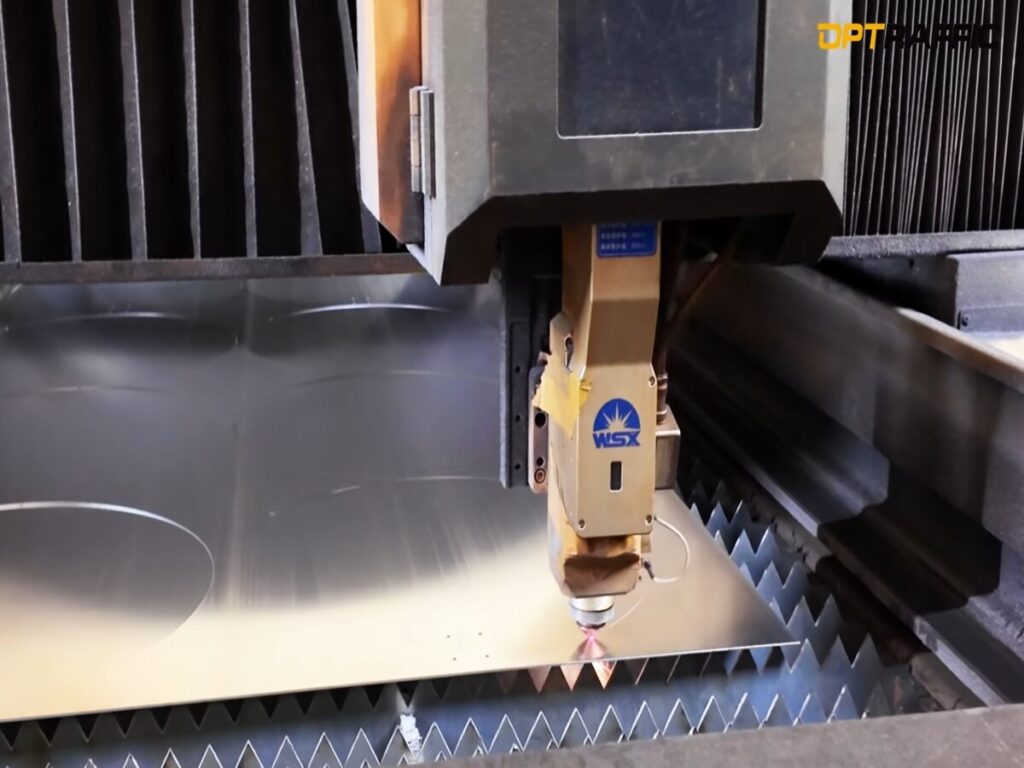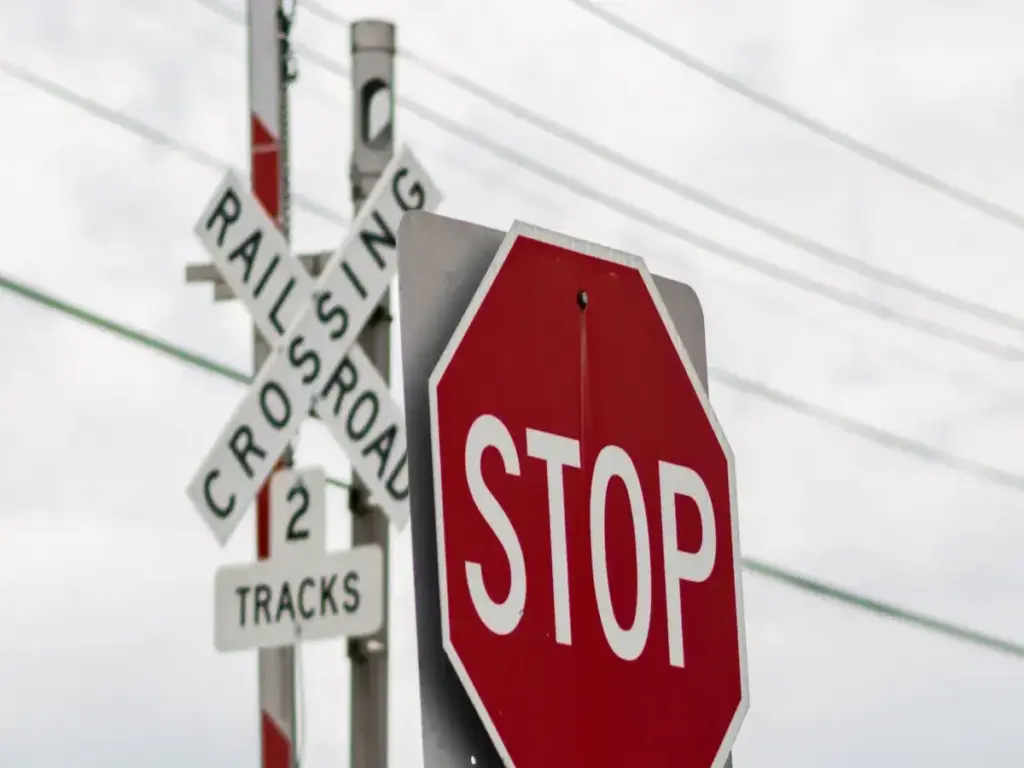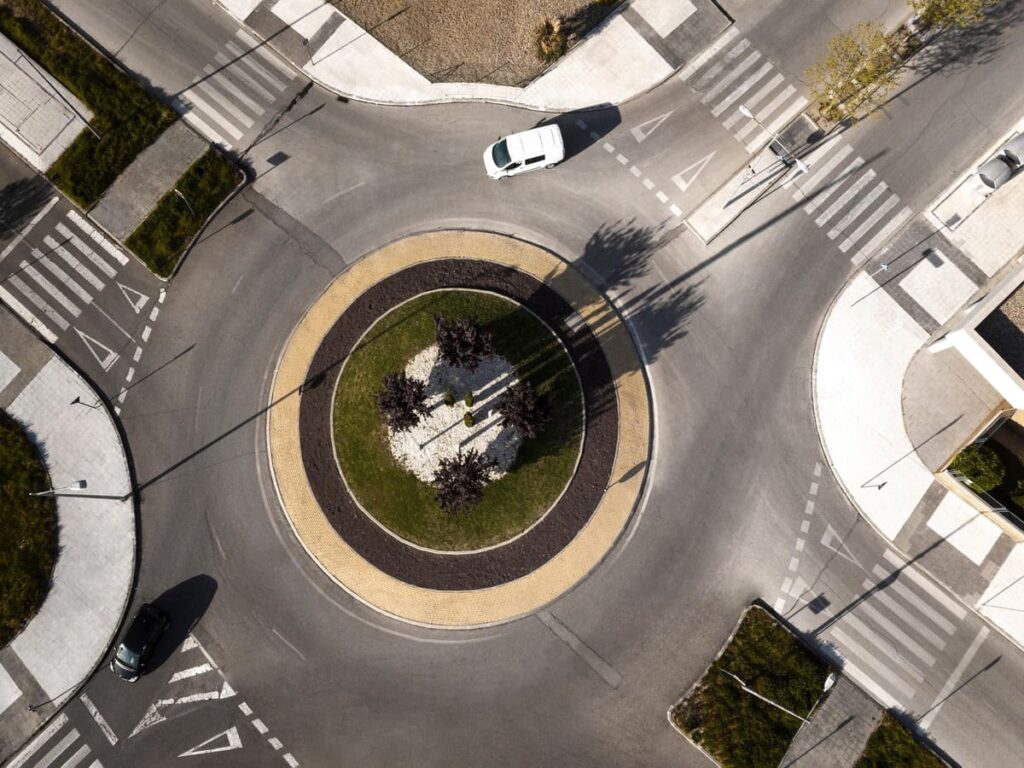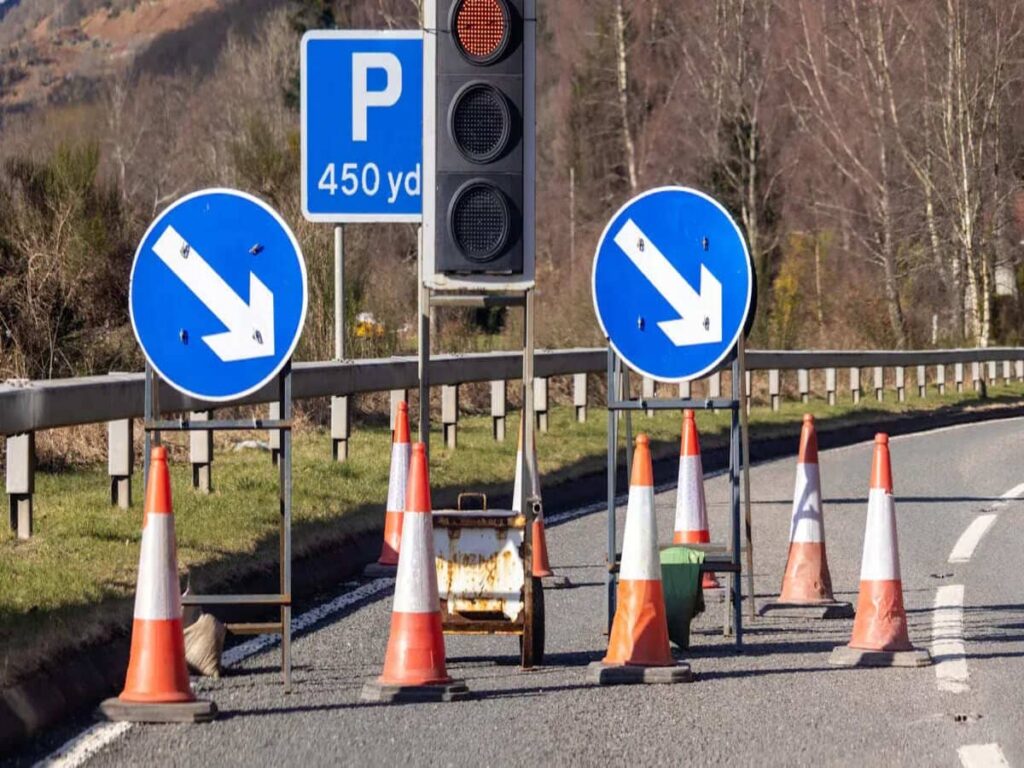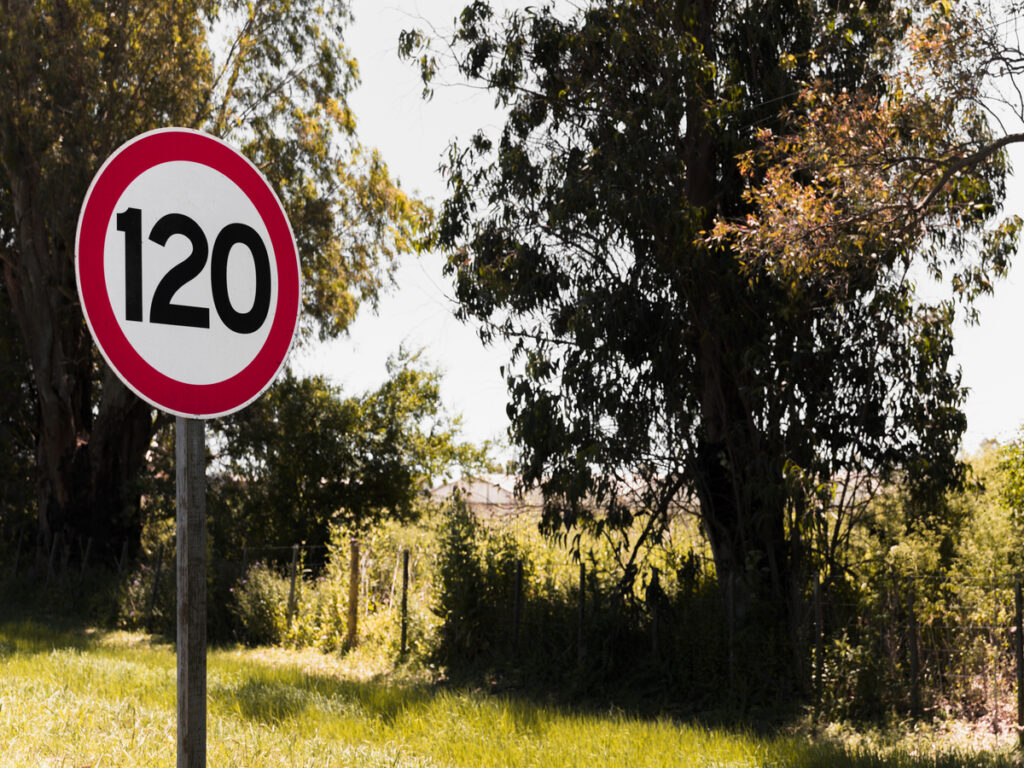
Aluminium is the top material for traffic signs for sale. It is light but also very strong and lasts a long time. The material used for signs helps keep roads safe. It also makes sure signs stay clear and steady in any weather. Aluminium signs are liked all over the world. More people want aluminium signs as rules now focus on quality and how long signs last. Buyers, installers, and users all get benefits from aluminium. It does not rust, is easy to use, and works well. New studies show aluminium and aluminum signs last longer. This means signs do not need to be changed as often outside.
OPTRAFFIC offers high-quality aluminium traffic signs that meet Australian standards for durability and performance. Our traffic signs for sale are built to last, reducing maintenance and replacement costs while keeping roads safer.
Key Takeaways
- Aluminium traffic signs are light and strong. This makes them easy to move and put up. They are also easy to carry from place to place. People can install them quickly and safely.
- These signs do not rust or get damaged by weather. They last for more than 10 years with little care. They stay strong even in tough places like near the sea.
- Aluminium signs cost less than steel signs over time. This is because they do not need many repairs. They also do not need to be replaced often.
- Most aluminium in signs comes from recycled things. This makes them good for the environment. It is a smart and green choice.
- You can choose different sizes and thicknesses for aluminium signs. They can also have special shiny coatings. This makes them useful for many road safety jobs.
Lightweight
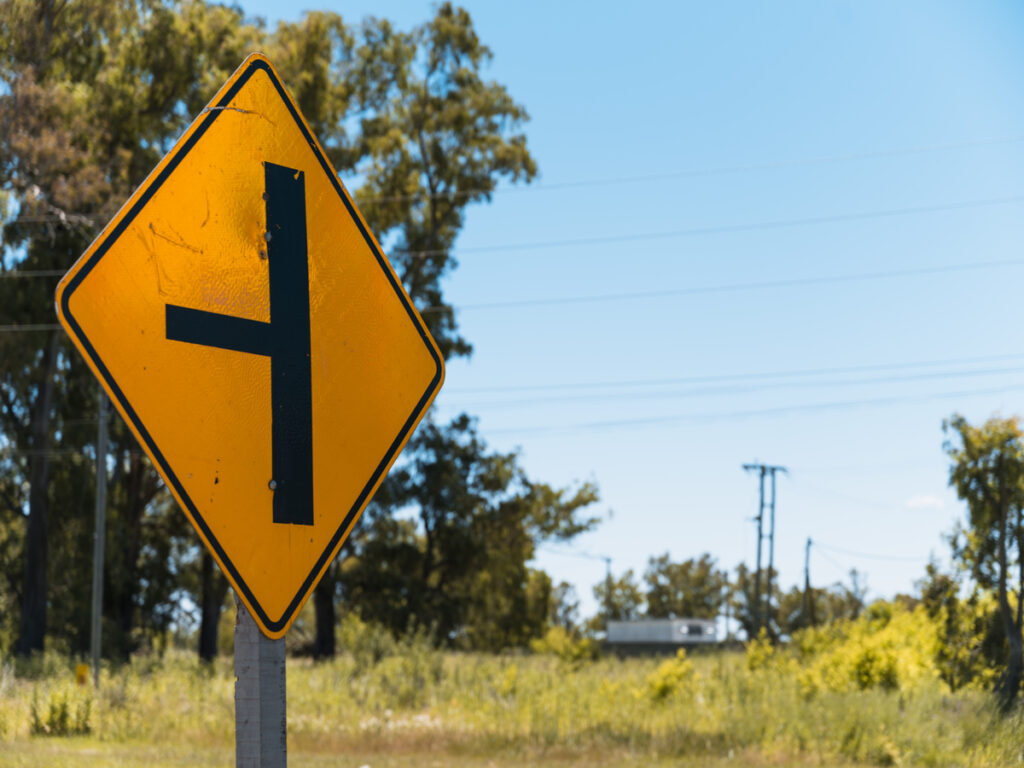
Handling and Installation
Aluminium is a top choice for traffic signs for sale. It is easy to move and put up. Workers say aluminium panel signs are lighter than steel ones. This makes lifting and placing signs much easier. Fewer workers are needed to put up aluminium signage. They do not need big machines or special tools. This makes the job safer and quicker.
Aluminium is light but also strong. This helps workers when they put up traffic signs. They do not have to use as much strength. This means fewer injuries and less tiredness. In the Brisbane Riverfront Project, teams put up aluminium sign frames 40% faster than steel ones. The lighter weight made the work quicker and safer. Aluminium does not rust, so signs last longer.
Aluminium panel signs do not need heavy support. Posts and frames can be thinner and simpler. They do not have to hold much weight. This is good for signs high above roads or on temporary stands. Aluminium is light and strong, so signs stay safe and steady everywhere.
Transport and Logistics
Moving aluminium traffic signs for sale saves money and time. Aluminium signs weigh about one-third of steel signs. Trucks can carry more signs at once. This saves fuel and means fewer trips. This is important for big jobs or faraway places.
- Lighter signs mean more can fit in each load, which saves on delivery costs.
- Less work and smaller tools are needed to unload and put up signs.
- Aluminium does not rust, so signs last longer and need less fixing.
- Lighter signs put less strain on posts, so they last longer.
- Handling on site is easier and faster, so teams finish sooner.
Aluminium is light, so teams can act fast when needed. In busy cities, teams can put up or change signs without stopping traffic for long. On highways, moving and setting up big signs quickly keeps everyone safer. In faraway places, lighter aluminium signs are easier to bring in.
Aluminium panel signs work well in all places. They are light, strong, and last a long time. This helps projects finish on time and within budget. That is why aluminium is the best choice for anyone who needs good traffic signs for sale.
To learn more about how to choose the right material for your project, read our blog: Which Material Is Right for You? Comparing Safety Signs for Sale: Aluminum vs Plastic vs Magnetic.
Strength
Aluminium is strong for its weight. It is not heavy but still tough. The table below shows how aluminium and steel compare in weight and density:
| Material | Density (g/cm³) | Weight Ratio (relative to steel) |
|---|---|---|
| Aluminum | 2.71 | About one-third |
| Steel | 7.87 | 1 (baseline) |
Aluminium weighs much less than steel. Even though it is lighter, aluminium frames can be just as stiff and strong as steel ones. This makes aluminium a great pick for traffic signs where strength and lightness are both important.
Impact Resistance
Some aluminium alloys like 5052-H38 are used for traffic signs. These alloys are very strong and do not bend or break easily. They can handle hits from objects or even vandalism. Many government groups use aluminium for highway signs because it meets tough rules. Other alloys like 5052-H36, 3004-H38, 3105-H18, and 6061-T6 are also good for roadside signs.
- Aluminium signs are tough and do not break easily.
- They keep their shape after being hit, so they last longer.
- A natural layer forms on the surface, which helps stop rust.
- Special coatings can make aluminium signs even stronger.
- These signs need little care and work well inside and outside.
Aluminium is strong, so it can take knocks from cars or flying things. This makes it a good choice for signs that need to last a long time.
Wind and Weather
Aluminium traffic signs work well in bad weather. Aluminium composite panels and solid aluminium signs stay flat and stiff, even in strong winds or storms. ACP panels pass tests for wind and shaking. They do not bend or change shape in hot or cold weather. Solid aluminium signs are also strong, but they might dent if hit very hard. ACP panels can take shocks better because they have layers.
A test by the Queensland Department of Transport showed aluminium panels on swing-stand frames did not bend or twist in winds up to 35 km/h. The frame had wide legs and strong clamps, which helped keep the signs steady. Thin aluminium panels need to be fitted well to stay safe, but when done right, they can handle normal wind very well.
Aluminium signs also do not rust or get damaged by rain, snow, or heat. The metal does not break down in wet or damp places. Signs made from aluminium often have covers that keep out water and dust. These features help the signs work in rain, snow, and very hot or cold weather from -30°C to 50°C. Strong glass can protect the sign face from things hitting it or from people trying to damage it. Heating and cooling inside the sign help it work in all weather.
Tip: Check signs often and make sure they are fixed well to keep them safe in any weather.
Aluminium is stronger and lasts longer than other materials. Steel is heavier and can rust. Plastic and composite panels are lighter but not as strong or long-lasting. Aluminium’s strength and light weight make it the best choice for traffic signs in any weather.
Durability
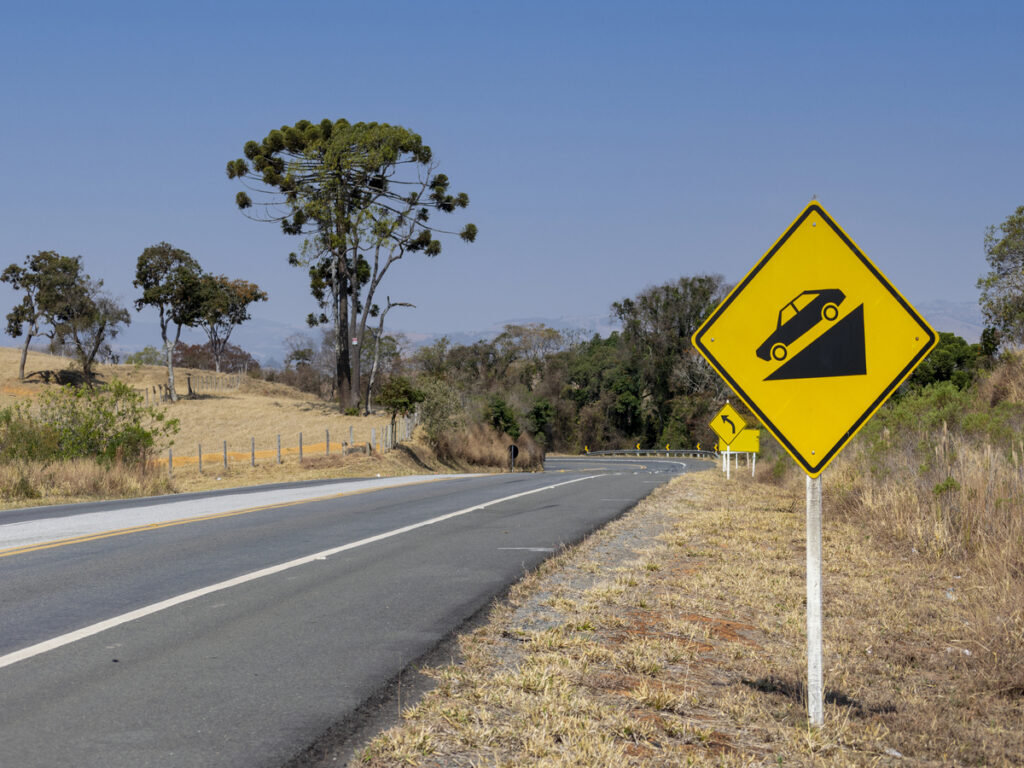
Corrosion Resistance
Aluminium signs are very good at not rusting. When they are outside, a special layer forms on them. This layer keeps the metal safe from rust. The sign stays looking new for a long time. Steel needs extra coatings to stop it from rusting. Aluminium does not need these coatings. It stays rust-free even in wet or salty places. This makes aluminium signs great for use outdoors, even when the weather is bad.
The table below shows how well different materials resist rust and where they work best:
| Material | Corrosion Resistance | Best Environment |
|---|---|---|
| Aluminum | Naturally resists rust | Wet, coastal, and salty areas |
| Steel | Needs protective coatings | Dry inland areas with low rust risk |
Aluminium signs do not bend or crack easily. Because they are light, they do not put much strain on posts. This means the signs do not change shape over time. Checking signs often helps keep them in good shape. But aluminium signs need less care than plastic ones. Many councils pick aluminium for outdoor signs because it is strong and lasts a long time.
UV and Temperature Stability
Aluminium signs keep their shape and colour in the sun. The metal does not break or lose colour from UV rays. Special coatings like fluorocarbon spraying help protect the signs. These coatings keep the signs safe from sun, rain, and changes in temperature.
| Feature | Fluorocarbon Spraying | Powder Coating |
|---|---|---|
| UV Resistance | High – maintains colour | Moderate |
| Weather Protection | Superior | Adequate |
| Corrosion Resistance | Excellent | Good |
| Longevity | Longer lifespan | Shorter lifespan |
Aluminium signs last more than 10 years outside. Steel signs can last as long but need more care to stop rust. Plastic signs last about 5 years and are better for short-term use. Aluminium signs last longer, so you do not need to replace them as often. This saves money over time. Councils and workers trust aluminium signs because they stay strong and easy to see, even in tough weather.
Note: Checking signs often and putting them up the right way helps them last longer. Aluminium signs are the best choice for strong and long-lasting outdoor signs.
Cost and Sustainability
Affordability
Aluminium signs are cheaper for councils and businesses. When you look at prices, aluminium costs less than steel. The table below shows the price difference in 2025:
| Material | Cost Range (per sq. ft.) |
|---|---|
| Steel | $25 – $35 |
| Aluminum/Plastic | $15 – $25 |
Aluminium signs save about $10 for each square foot. This helps keep costs low, especially for big projects. Aluminium signs also need less care. They do not rust, so they stay strong for many years. This means you do not have to fix or replace them often. Over time, councils and companies spend less money on looking after signs.
Recyclability
Aluminium signs are a good choice for the environment. Most aluminium in traffic signs comes from recycled metal. The aluminium alloy ASTM 3105 has over 90% recycled content. Only about 10% is new aluminium. Using recycled aluminium means less waste and saves resources.
Aluminium signs help create a circular economy. The industry follows ISO 59000 rules to use resources well and cut down on waste. Many companies now choose recycled aluminium and low-carbon ways to make signs. These actions help lower pollution and support world sustainability goals.
- Aluminium can be recycled again and again without losing quality.
- It does not need extra coatings, so it makes less pollution.
- Lighter aluminium signs use less fuel when shipped.
- Plastic signs often cannot be recycled and break down faster outside.
Choosing aluminium signs helps the planet and supports green rules. More than two-thirds of all aluminium ever made is still being used. This shows aluminium is a great choice for a greener future in outdoor projects.
Versatility
Aluminium signage is good for many uses. Makers can shape aluminium into lots of sizes and forms. This helps councils, businesses, and others get the signs they need. Aluminium signs can be square, rectangle, diamond, or special shapes. They can have logos or words to fit what people want.
Customisation
Aluminium signage gives many ways to change the sign. Buyers can pick sizes, shiny surfaces, and how the sign is printed. The table below shows popular choices in 2025:
| Customisation Aspect | Options Available |
|---|---|
| Sign Size | 225x450mm, 450x300mm, 600x450mm, 900x600mm, and other custom sizes |
| Material Thickness | Aluminium (1.5mm), Steel (0.8mm), Galvanised Steel |
| Reflective Film Grade | None, High-Intensity Engineering Grade, Class 1, Diamond Grade |
| Printing Options | Single or Double-Sided, Fade-Resistant Printing |
| Physical Features | Rounded Corners, Eyelets for Easy Installation |
| Customisation | Custom Text and Logos |
Special aluminium blanks let people make new designs. Councils and companies can put their own logos or words on signs. Shiny surfaces help drivers see signs at night or in bad weather. Signs with holes and round corners are easy and safe to put up. These things help buyers follow rules and keep roads safe.
Tip: Change aluminium signs to fit local rules and help everyone see them better.
Thickness Options
Picking the right thickness for aluminium traffic signs for sale matters. Thin panels are good for small or indoor signs. Thick panels are stronger for big outdoor signs. The table below shows how thickness changes use and how long signs last:
| Thickness (inches) | Application & Durability Impact |
|---|---|
| .032″ to .040″ | Best for small signs or indoor use; lightweight but less rigid |
| .050″ | Good for small to medium signs; offers more stiffness |
| .063″ | Medium duty; ideal for post-mounted signs; better durability |
| .080″ | Heavy duty; suited for large outdoor signs; highest rigidity and durability |
Aluminium Dibond panels are often 3mm or 6mm thick. They have a light middle and strong aluminium on both sides. Thick panels do not bend or twist, so they are good for busy roads or bad weather. Picking the right thickness helps signs last and stay safe.
Aluminium signage can be changed for many needs. Councils, businesses, and others can make signs for any road, weather, or rule. This makes aluminium the best pick for traffic signs for sale in 2025.
Experts still say aluminium is best for traffic signs in 2025. It has many great features that make it a top choice. The table below shows why people like aluminium signs:
| Feature | Aluminium Signs Description |
|---|---|
| Durability | Stays strong and keeps its shape in bad weather |
| Weather Resistance | Does not rust or get ruined by rain, sun, or wet air |
| Corrosion Resistance | Stops rust and damage from chemicals |
| Longevity | Can last outside for up to 8 years without fading or peeling |
| Weight | Light, so it is easy to put up |
| Reflective Coating | Works well with films that help drivers see the sign |
Aluminium signs follow tough rules used all over the world. This helps keep roads safe and signs easy to see. If you want signs that last and work well, pick aluminium for your next job.
To learn more about how material choices impact road safety and durability, check out our blog: How Material Choices Shape the Future of Traffic Signs for Sale in Australia.
FAQ
What makes aluminium better than steel for traffic signs?
Aluminium weighs less than steel. Workers can move and install aluminium signs more easily. Aluminium does not rust, so signs last longer outdoors. Steel signs need extra coatings to stop rust.
How long do aluminium traffic signs last outside?
Aluminium traffic signs often last over 10 years. The metal resists rust and fading. Special coatings help signs keep their colour and shape in sun, rain, and wind.
Can aluminium signs be recycled after use?
Yes, aluminium signs can be recycled many times. Recycling saves energy and resources. Most new aluminium signs use recycled metal.
Are aluminium signs safe for use in coastal areas?
Aluminium signs work well near the sea. The metal does not rust in salty air. Councils often choose aluminium for coastal roads.
What thickness of aluminium is best for large road signs?
For large road signs, 3mm thick aluminium gives the best strength and stiffness. This thickness helps signs stay flat and safe in strong winds.

